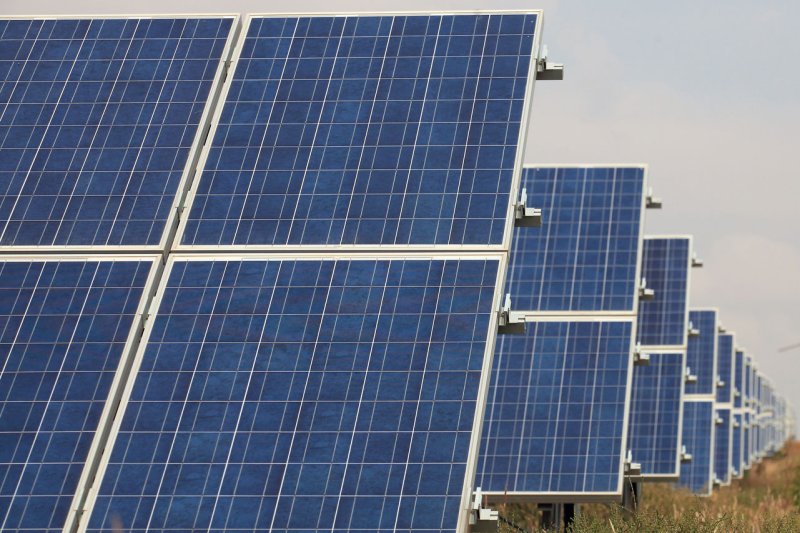An industry trade group found U.S. solar power installations declined after a banner year in 2016, but said growth remains impressive. File photo by Stephen Shaver/UPI. |
License Photo
March 15 (UPI) -- After a banner year for the U.S. solar power sector in 2016, growth has slowed down in response to waning segment support, a trade group found.
An annual review of 2017 solar market activity from the Solar Energy Industries Association, a trade group supporting the industry, and GTM Research found total installed capacity was 10.6 gigawatts, down from the 15 GW installed in 2016.
'The solar industry delivered impressively last year despite a trade case and market adjustments," SEIA President and CEO Abigail Ross Hopper said in a statement.
Installations two years ago were "record-shattering" because planners were rushing to take advantage of federal tax credits. New certainty, meanwhile, has emerged in January when U.S. President Donald Trump signed off on measures imposing a 30 percent duty on imported solar products following review and recommendations from the U.S. International Trade Commission.
The ITC took up the case amid complaints from Suniva, a Chinese-owned company with U.S. manufacturing centers, and SolarWorld, whose parent is in Germany, that cheap solar components from Asia made the U.S. sector less competitive.
Hopper's group countered, however, that only a few thousand U.S. workers were actually employed making solar panels and the tariffs would eliminate, not create jobs.
For wind energy, U.S. Reps. Raúl Grijalva, D-Ariz., Bill Keating, D-Mass., and Niki Tsongas, D-Mass., introduced a measure that would support skills-training for offshore wind farms, a fledgling industry in the United States.
Rhode Island in 2016 became the first state in the nation to have a wind farm off its coast. In the second quarter of last year, Maryland opened up its waters for offshore wind energy development.
There are more than a dozen offshore wind energy projects in various stages of development in the United States, representing more than 9.1 GW of installed capacity. One GW is enough to power 100 million LED light bulbs.
"We cannot overstate the value that investing in clean and renewable energy has the potential to bring to the U.S. economy," United Steelworkers International President Leo W. Gerard said in a statement.
Tariffs imposed on steel and aluminum by Trump this month were criticized by manufacturers and energy trade groups. The U.S. Association of Oil Pipelines said pipeline-grade steel is a niche industry that U.S. manufacturers have left because of the higher costs and lower margins, compared to other sectors like automotive. Domestic steel capacity isn't strong enough to support pipeline demand in the U.S. energy sector.















